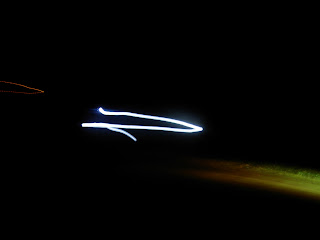("In photography, bokeh is the blur or the aesthetic quality of the blur in out-of-focus areas of an image. Bokeh has been defined as "the way the lens renders out-of-focus points of light". However, differences in lens aberrations and aperture shape cause some lens designs to blur the image in a way that is pleasing to the eye, while others produce blurring that is unpleasant or distracting—"good" and "bad" bokeh, respectively. Bokeh occurs for parts of the scene that lie outside the depth of field. Photographers sometimes deliberately use a shallow focus technique to create images with prominent out-of-focus regions.
Bokeh is often most visible around small background highlights, such as specular reflections and light sources, which is why it is often associated with such areas. However, bokeh is not limited to highlights; blur occurs in all out-of-focus regions of the image.)
Those were the only two decent ones I could get. Next I messed around with the settings, testing out filters and what-not. I finally found a preset called Firework. The firework setting was supposed to be for exactly what it sounds like its for. It takes continual images in order to catch the light display in it's full glory. This setting was obviously meant for steady hands or a tripod. (I have neither.) But the result was something more amazing than the Bokeh i was after.







